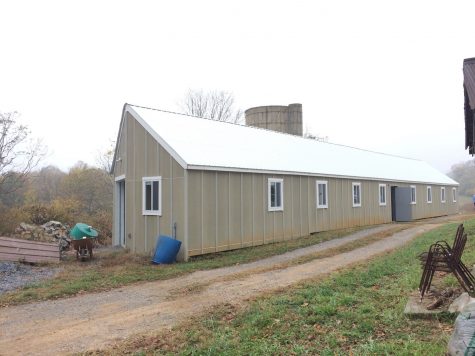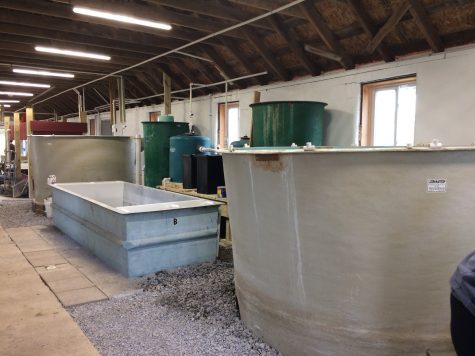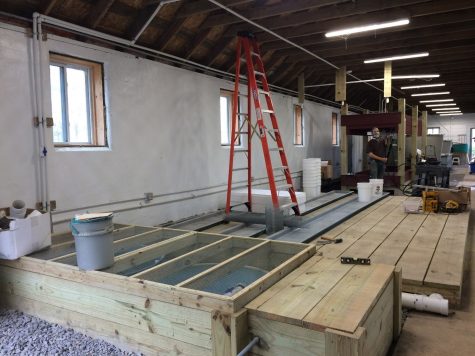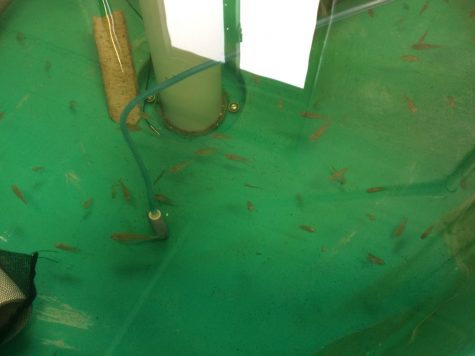SHEPHERDSTOWN, W.Va., – At first glance on a foggy and soggy fall morning, there doesn’t seem to be much happening at the Agriculture Innovation Center at Tabler farm. But to assume so would be a mistake.
The farm is a 158-acre piece of property that was acquired by Shepherd University in the mid-1990s. Over the years it has been used as an orchard and by local farmers for their cattle.
This changed 3 years ago when the U.S. Department of Agriculture (USDA) Natural Resources Conservation Service awarded Shepherd University a $600,000 grant. The USDA grant, along with grants from Women Investing in Shepherd (WISH), Home Depot and others, have gone towards the construction of a high-tower greenhouse, raised beds, a solar array, water access, and the renovation of the milk parlor.
These changes, along with the grant from the USDA which requires a focus on veterans, have helped to usher in agricultural focused certificate programs, a 4-year sustainable production program concentration for Environmental majors, and 2 programs in Regions Bachelor of Arts (RBA) in entrepreneurship and food production.
After 3 years, the high tower, raised beds, and open fields are producing food, which the farm donates. This past spring, they donated their winter crops to Shepherdstown Shares which distributes it to people in need in the local community.

The focus now, is what it is happening in the refurbished milk parlor. The 18 X 100 foot building is a far cry from what it once was, with no hint it ever had cows in it. It is now filled with containers of all kinds, 2 large raised beds, pipes running along walls and in the air, and an open area that quickly gets filled up with long trays and buckets.
It is now looking like an aquaponics laboratory, which is the goal of Dr. Vila and his volunteers. Dr. Vila is the Assistant Professor of Environmental Studies and the man in charge of the aquaponics lab, which aims to raise fish to supply nutrients to plants that are grown without soil in an integrated system.

Dr. Vila said recently of the aquaponics lab, “I envision lots of experiments that students can undertake, or at least participate in should they want, to enhance production.”

Currently, the lab is nearing the end phase of the construction, with testing and waiting coming next. He said, “We’re filling up with water now, doing the pumps and testing. We’ve installed preliminarily, the lights. So, what we need now is for the fish to grow in size to get the ecological side of things going.”
The fish in question are Blue Nile tilapia. They were picked for their hardiness and name recognition, as one of the other goals of Dr. Vila is to be able to maintain the system and allow for growth to the lab. He said, “I want to sell our food to the school. At this point, there is interest, but we haven’t been in production mode long enough.”

According to Dr. Vila, once the fish reach the appropriate size, a month is needed before planting can start. He sees that happening by this winter. He said, “This is our first winter where we are really going to install these systems, so were feeling how that’s going to work. This winter will be testing and growing, but not in production mode yet.”

Leave a Reply